Kitchen cabinets often define the overall style and functionality of the heart of your home. As one of the most prominent features, they not only provide essential storage but also contribute to the aesthetic appeal of your kitchen. Choosing the right material for your kitchen cabinets is, therefore, a crucial decision, one that shapes your kitchen’s look and feel and influences its durability and maintenance needs.
This comprehensive blog post aims to guide you through the intricate world of kitchen cabinet materials. From understanding different materials to assessing your personal needs, considering durability, longevity, cost, maintenance, and aesthetic appeal, we will equip you with the knowledge you need to make an informed decision.
Understanding Different Kitchen Cabinet Materials
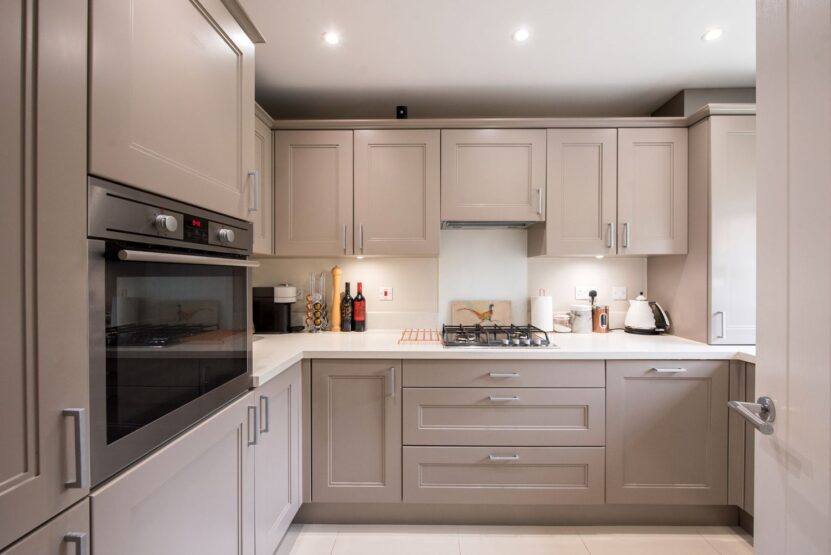
There’s a plethora of materials available for kitchen cabinets, each offering unique characteristics, benefits, and drawbacks.
Solid Wood: A traditional and high-end option, solid wood offers durability, longevity, and a timeless appeal. It is, however, one of the more expensive choices and can be susceptible to warping in humid conditions.
Plywood: Known for its strength and stability, plywood is resistant to cracking, shrinking, and warping. It is less costly than solid wood but still offers a high-quality appearance.
Medium-Density Fiberboard (MDF): MDF offers a smooth surface ideal for painted finishes. While it’s not as strong as solid wood or plywood, it resists warping better than solid wood.
Particleboard: A budget-friendly option, particleboard is composed of wood chips or wood shavings bonded together. Its main drawbacks are a lack of durability and poor resistance to moisture.
Laminate: Made of plastic-coated synthetics, laminate cabinets offer a sleek, contemporary look. They are easy to clean and reasonably durable, but once damaged, they can be difficult to repair.
Thermofoil: Thermofoil cabinets are made by applying a vinyl film to a substrate like MDF. They offer a uniform, glossy finish at an affordable cost but can peel over time and are sensitive to heat.
Metal: Stainless steel or aluminum cabinets bring a modern, industrial look to your kitchen. They are incredibly durable and easy to clean, but they can show fingerprints and scratches.
Glass-fronted cabinets: Glass isn’t used for the entire cabinet but rather to add an elegant touch to cabinet doors. It allows for display of dishware but may require more frequent cleaning.
Assessing Your Needs and Priorities
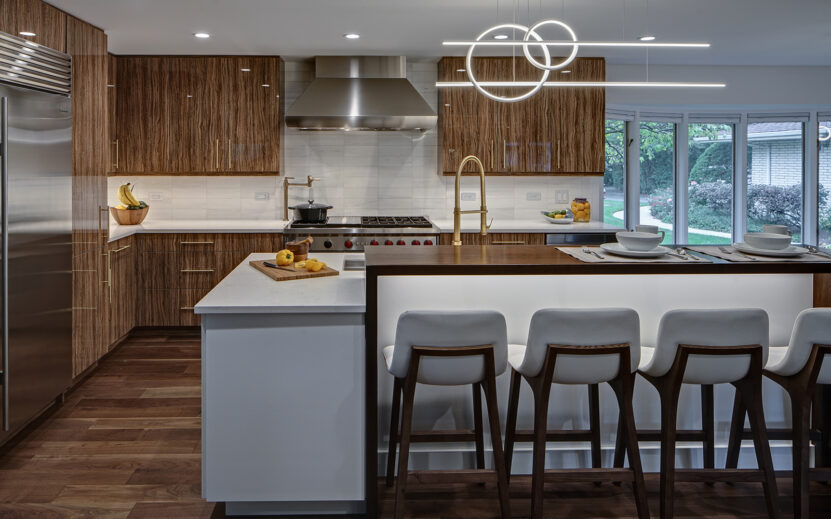
Before delving into the specific properties of each material, it’s important to identify your needs and priorities. Consider factors like the durability you require, how much maintenance you’re willing to undertake, your budget constraints, and the style you wish to achieve.
For instance, if you’re looking for a classic, timeless design, solid wood might be a great fit. Alternatively, if you want a sleek, modern kitchen with minimal maintenance, metal or laminate could be ideal.
Evaluating Durability and Longevity
When it comes to durability, solid wood and plywood often take the lead. However, some modern materials like thermofoil and laminate also offer reasonable durability at a lower price point. MDF, while less robust than solid wood, is often preferred for its resistance to warping, especially in humid climates.
In terms of longevity, solid wood, if maintained properly, can last for several decades. Plywood and metal also boast long lifespans. Other materials like MDF, particleboard, and thermofoil may have shorter life expectancies, particularly in high-usage or humid environments. The best way to see any of this for yourself is to check out the furniture at a selling location https://www.google.com/maps/place/Orange+Cabinets+Inc./@33.6071595,-117.6914104,15z/data=!4m2!3m1!1s0x0:0x4c8d062c741870ef?sa=X&hl=en&ved=2ahUKEwiZioLDhtb-AhWS9rsIHbB0DUYQ_BJ6BAhaEAk
Budget Considerations

Cabinet material greatly influences the cost of your kitchen remodel. Solid wood cabinets typically command the highest price, followed by metal and plywood. On the other end, particleboard, laminate, and thermofoil are more budget-friendly options.
It’s essential to balance cost and quality—while you may save upfront with less expensive materials, they might need replacement sooner.
Maintenance and Cleaning
Maintenance requirements differ for each material. Wood cabinets may need occasional refinishing to maintain their luster, while metal and laminate are virtually maintenance-free. Glass-fronted cabinets, while elegant, will require more frequent cleaning to keep them looking their best.
When it comes to cleaning, most materials are easy to clean with a damp cloth and mild detergent. However, for thermofoil and laminate, avoid using abrasive cleaners that can scratch the surface.
Style and Aesthetic Appeal
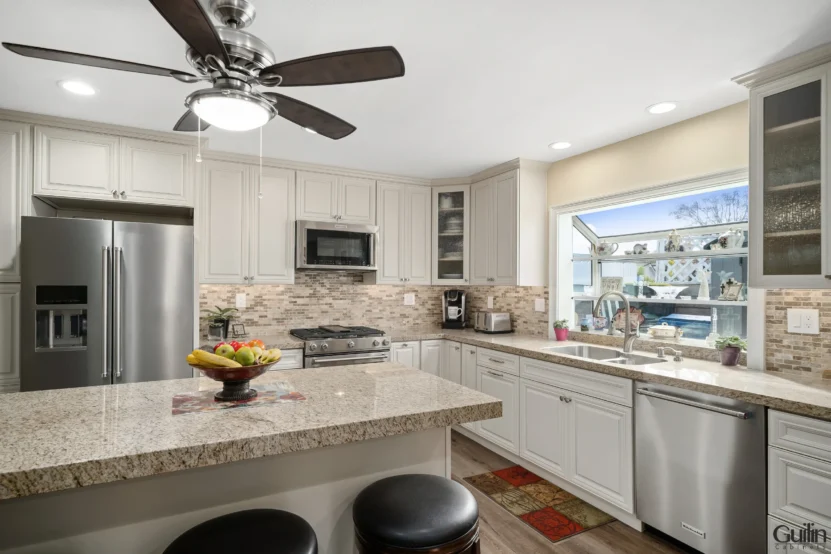
The choice of cabinet material plays a pivotal role in defining the style and ambiance of your kitchen, as it has the power to transform its overall appearance. Solid wood, with its rich grains and natural warmth, exudes a timeless charm that effortlessly brings forth a traditional, rustic, or classic appeal. On the other hand, metal and glass materials embrace a more avant-garde essence, infusing your kitchen with a contemporary and industrial vibe.
If you lean towards a modern, streamlined aesthetic, laminate and thermofoil materials offer an excellent choice, with their smooth surfaces and sleek finishes that create an air of sophistication. By carefully selecting the right cabinet material, you can effectively elevate your kitchen’s style and create a space that resonates with your personal taste and design vision.
Eco-Friendliness and Sustainability
If sustainability is a concern, consider plywood or solid wood from certified sustainable sources, or bamboo, a fast-growing and renewable resource. Particleboard and MDF, while containing recycled content, often use adhesives that can off-gas volatile organic compounds (VOCs), affecting indoor air quality.
Customization and Design Options
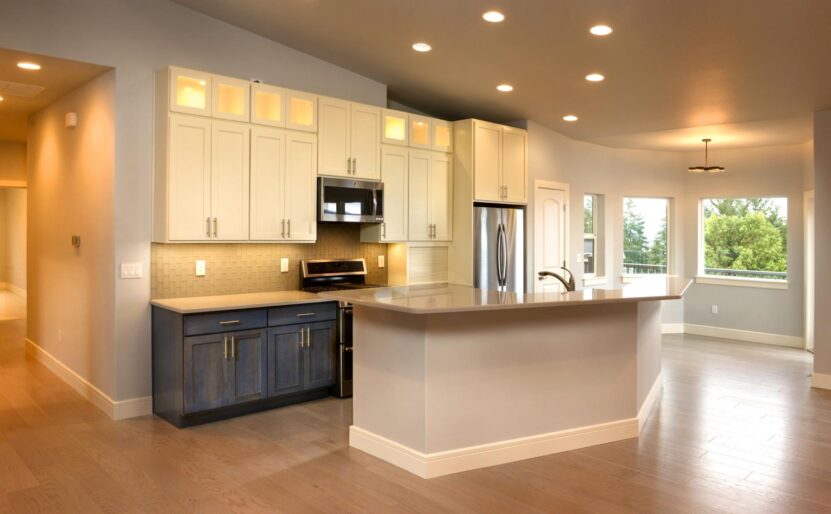
Most cabinet materials offer a wide range of finishes, colors, and hardware options. Solid wood and MDF are highly customizable, with endless painting or staining possibilities. Metal cabinets are typically available in several standard colors, while laminate and thermofoil come in a variety of colors and patterns.
Sound and Thermal Insulation
While not typically at the forefront of homeowners’ minds, it’s worth noting that the acoustic and thermal properties of cabinet materials play a crucial role in enhancing the overall comfort of your kitchen space. Delving deeper into the subject, we discover that certain materials possess inherent insulation capabilities.
For instance, the timeless charm of wood and the versatility of MDF provide them with exceptional sound-absorbing qualities, resulting in a quieter ambiance within your kitchen. On the other hand, it’s important to consider the thermal behavior of different materials. Metal, for instance, possesses the ability to resonate and conduct heat, which may influence the temperature dynamics in your culinary haven.
Case Studies and Examples
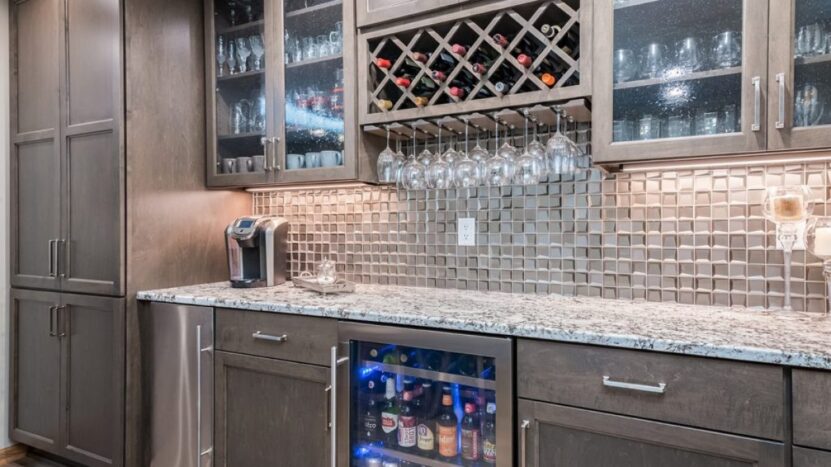
We’ve explored a wide range of kitchen cabinet materials in theory, but seeing them in action can provide further clarity. Look for real-life kitchen remodels featuring different cabinet materials, noting their visual appeal, functionality, and how they hold up over time.
Conclusion
Choosing the right material for your kitchen cabinets is a multifaceted decision that requires careful consideration of your needs, preferences, and budget. With a clear understanding of the different materials available and their respective properties, you’re now equipped to make a choice that combines functionality, durability, aesthetics, and value. As a final piece of advice, always consult with a kitchen design professional to ensure you’re making the best choice for your unique space.
